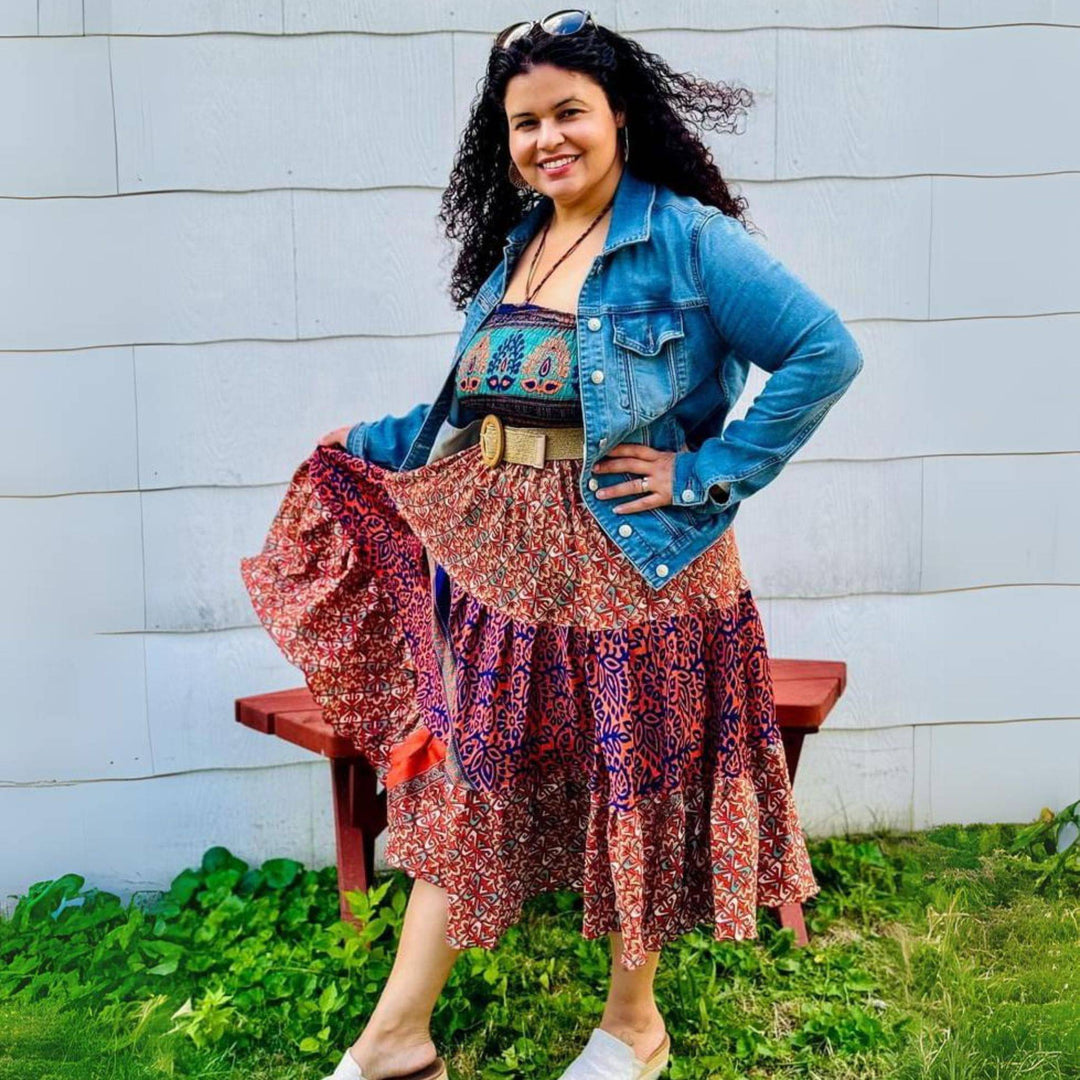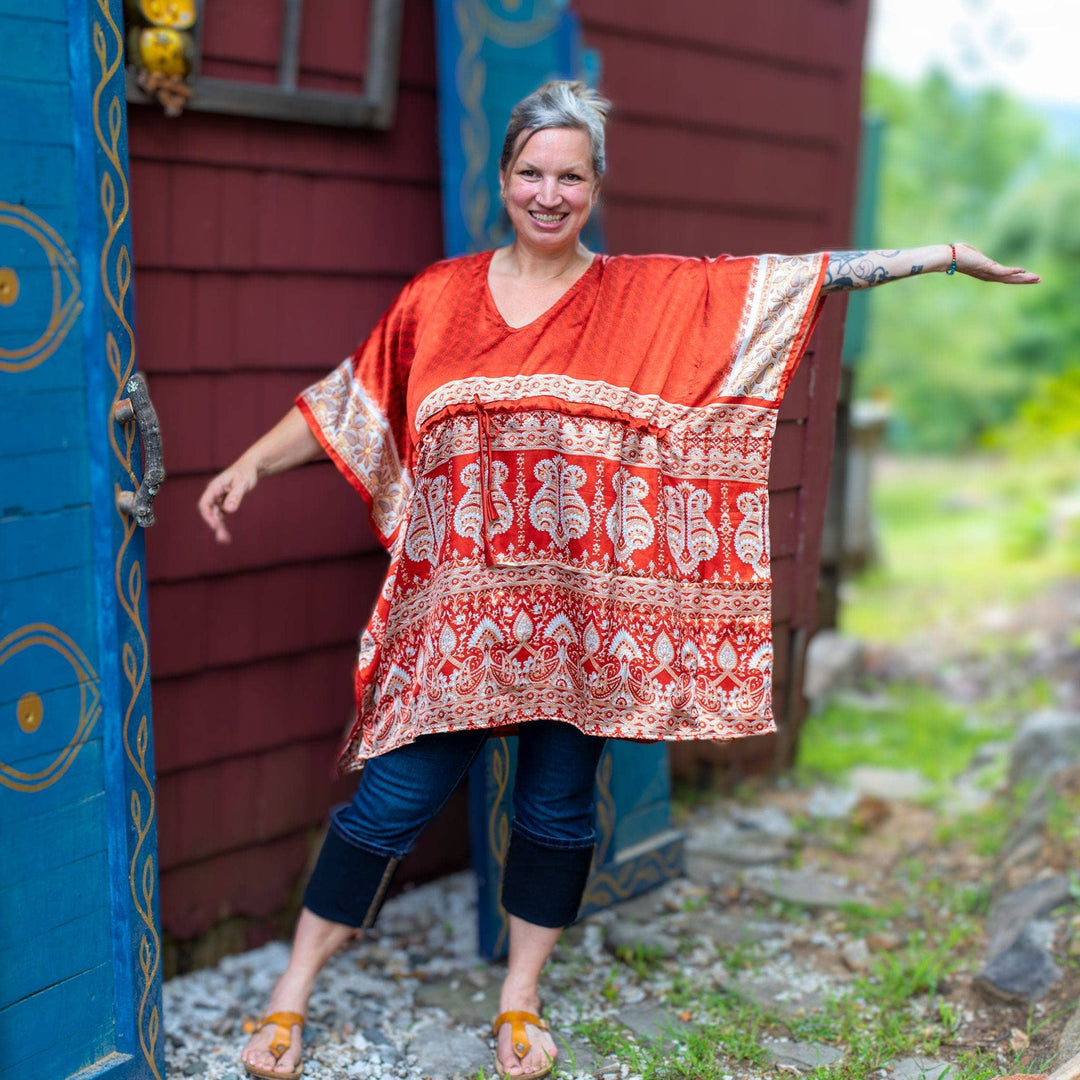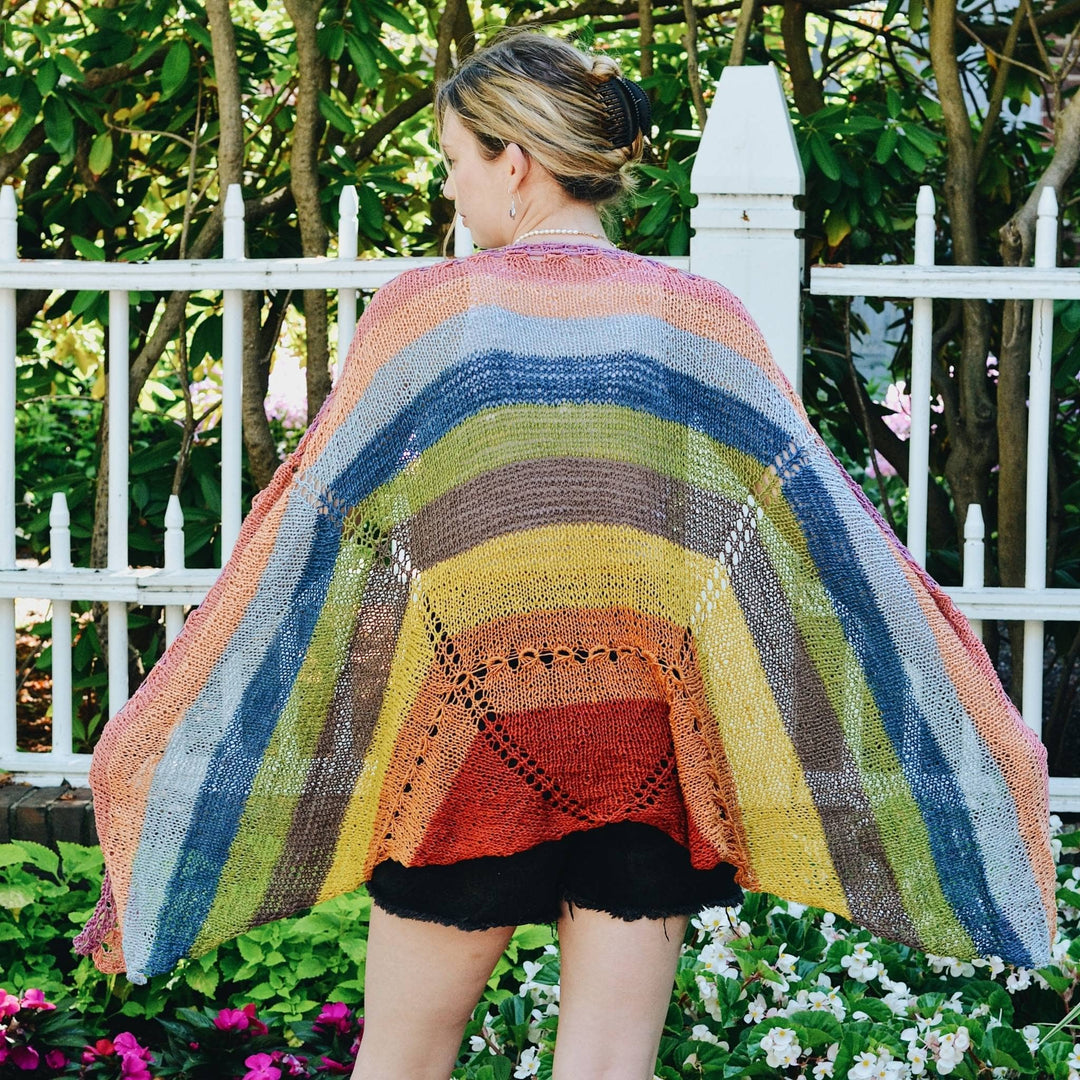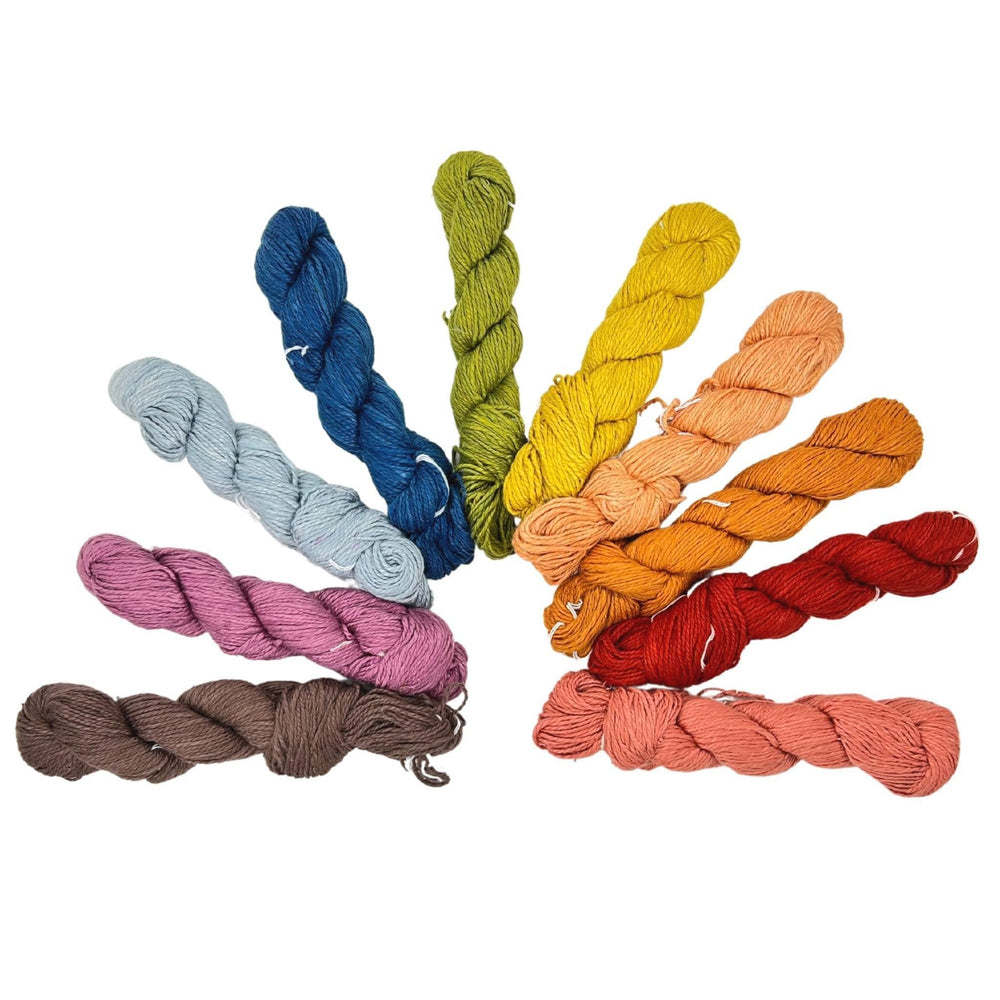If you’re new to the world of fiber arts, you may have asked yourself this question a few times. Quietly, in your head, hoping that no one could read your mind. Because everybody knows the difference between crochet and knitting…right? Right? Have no fear—you’re not alone! At some point in their life, even the most dedicated needle-nut has been confounded by this very question. Every expert first had to ask herself if she should learn to knit or learn to crochet. If you don’t want to ask your friends or crochet club buddies, you’ve come to the right place! We’ll get this cleared up once and for all.
Crochet vs. Knitting: What They Share
Before we dig into the differences between knitting and crochet, we first need to tackle the ways in which these two arts are similar. Just like people who share some commonalities, the practices of knitting and crochet do, too! So, what’s the same?
- You can make most projects utilizing either method: blankets, cowls, totes, baskets, scarves, hats, mittens, shawls, coffee cozies, and so much more!
- Both have unique challenges, fun quirks, and relaxing aspects that make them wonderful hobbies for people of any age to try.
- Both crafts are centered on the stitching together of fiber/yarn.
- The skill sets required are extremely similar for both knitting and crochet: Hand-eye coordination, patience, tenacity, planning, counting, and appreciation of fiber are all helpful skills to have.
Getting Down to the Knitty Gritty: Knitting

If you’d like to learn to knit by hand, you’ll need a few supplies that are unique to the craft—aka, different from the tools you would need for crochet.
The first is needles. In hand knitting, you use two needles. Most have a blunt end and a pointed end, while others have two points. There are endless sizes and types of needles. Some are skinny. Others are wide. They also come in varied lengths…and you won’t purchase just one pair! If you’re completing multiple projects, you will eventually need several different sets of needles. You may even use circular needles, which are two needles connected by a cord.
When you think of “knitting,” needles probably spring into your mind. However, many knitters utilize looms or machines to complete beautiful projects. We can’t forget our loom friends! Looms and machines are often used to complete larger projects such as sweaters or knit garments that you may find in a store.
It may surprise you, but knitters often need to utilize crochet hooks. This tool isn’t just for crochet alone. Hoping to fix mistakes or add frayed edges to a scarf? Crochet hook. Most knitters have at least one in their tote.
Another major difference between knitting and crochet is the way in which fabric is held. You might notice that yarn is held on the needle when you are knitting. After a few rows, it starts to spill off the needle like a shower curtain. The needle is full of active loops that build on each other, stitch after stitch, while you pass the loops back and forth between the needles. This is why one of the most common and frustrating knitting mistakes is dropping a stitch. A knitter may end up having to unravel an entire row to fix the dropped stitch!
Hooked on Crochet

Thinking you’d like to learn to crochet? If so, there are some quirks and supplies that are unique to the craft of crochet.
First off: the hooks! Instead of needles or machines, crocheters utilize hooks. In fact, they use just one hook at a time. That’s it. Just one! These hooks come in multiple sizes. You can even purchase a whole colorful set of crochet hooks if you’d like. One fun fact about crochet is that, unlike knitting, it cannot be done by a machine. If you’re going to crochet, you’re going to use your hands.
As explained above, crochet and knitting use the same yarns and fabrics, 99% of the time. But there is one thing that a crocheter can use that a knitter cannot: thread. Thread is too thin and delicate to use in a knitting project. But a thin crochet hook can handle thread. So, if you’re thinking of making a project that uses thread, better to find a crochet pattern rather than a knitting pattern. Remember, free patterns for both methods can be found online! Ah, the internet is a wonderful place, isn’t it?
In crochet, you’ll be looping fiber together, much like knitting, except the loops will look more like little knots. Additionally, crochet is a bit easier to stop in the middle of a project. You can just remove the hook, put a locking stitch marker onto the last loop, and let your project sit on the couch (or tumble around in your purse) while you go about your business. This can be a little less frustrating than the task of keeping active loops on a pair of knitting needles.
Which is Better?
When you look at a project that has been knitted together vs. one that has been crocheted, an untrained eye may not be able to tell the difference…even an expert may have a difficult time, depending on the yarn and project! Both knitting and crochet are simply methods for looping yarn together. The easiest way to tell the difference is to watch someone actually completing a project—are they using needles, machine, or a crochet hook? This is the most visible difference, aside from subtle distinctions in the stitches themselves.
Over the years, there have been countless debates over knitting vs crochet.. which is better, easier, cheaper, more fun, and more beautiful. In reality, both are so similar that is hard to choose! Both methods are of equal difficulty and both utilize the same fibers. Sure, with knitting you may choose to invest in more needles, but one could acquire quite the crochet hook collection, too! The good news is, you can actually do both. If you’d like to learn both, our Darn Good Yarn of the Month is one great place to start. With this $10-a-month kit, you’ll get a new skein of yarn and a knitting/crochet pattern every single month!
When comparing crochet and knitting, it all comes down to personal comfort level and preference. Some prefer the method that they learned first, be it because they learned from a close family member or friend, or because they’ve simply had more practice. Others like to switch back and forth over time. The truth is, both are wonderful ways to unwind, get creative, and produce beautiful products all by yourself! This is one battle that always ends in a tie. Or a knot, if you want to get technical.
Stay in touch!
If you'd like to stay up-to-date on upcoming sales, giveaways, and new tutorials, sign up for our newsletter!
 Rewards
Rewards

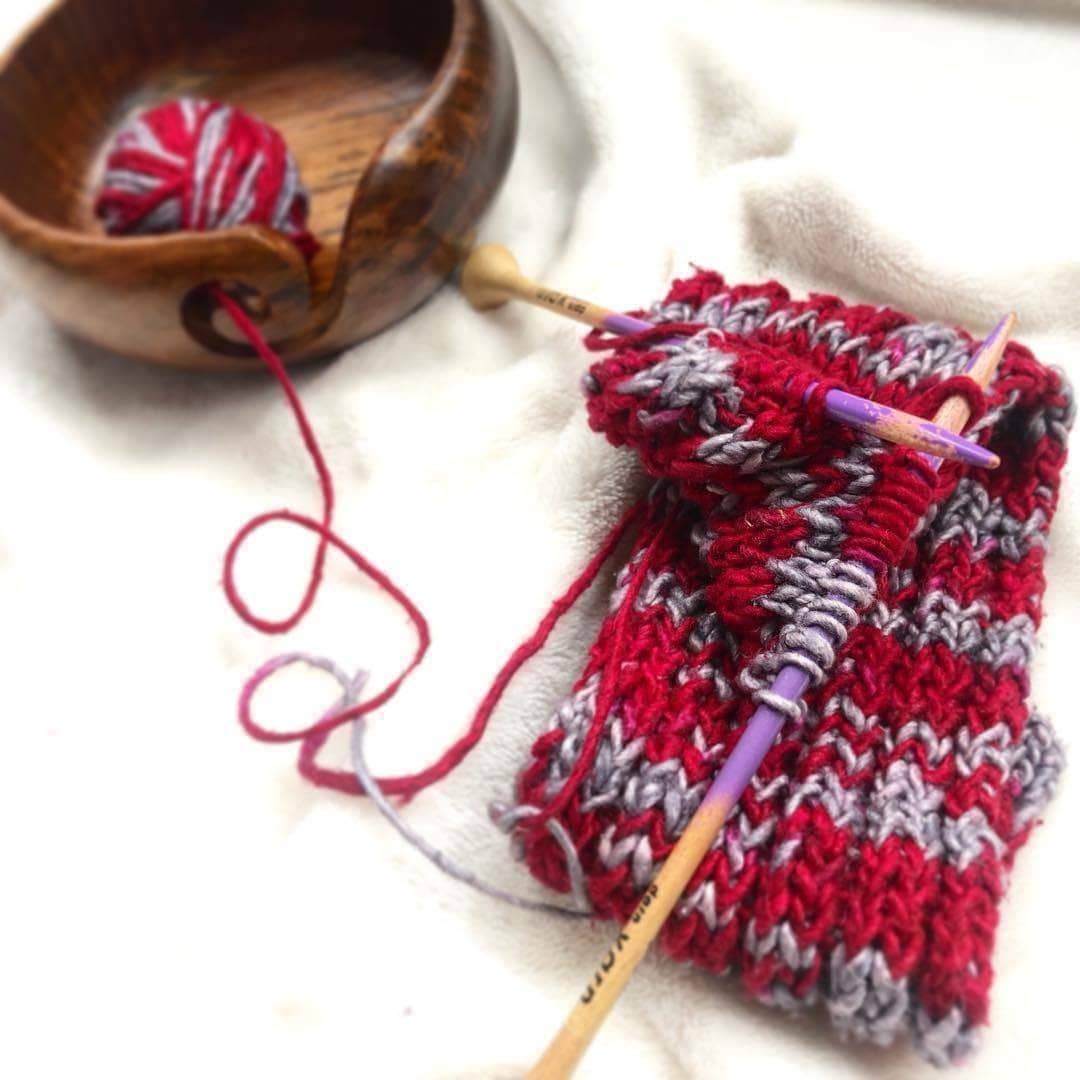
 Yarn of the Month Club
Yarn of the Month Club



